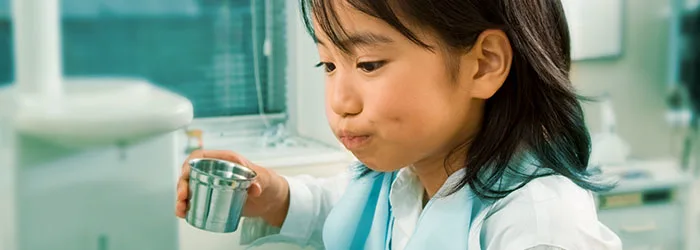
Now that your child’s teeth have come in, keeping them clean is key to healthy adult teeth. As a parent of a 3- to 5-year-old child, it's normal to have questions about all sorts of things like how to brush a child’s teeth or how to brush their teeth when they won't cooperate.
Why Brushing Is Important for Children Age 3 to 5
Brushing a child’s teeth is important for many reasons. Primary teeth keep your child’s jaw straight, hold the space for adult teeth, and play an important role in how children learn to chew, smile, and talk. Having healthy teeth will also help with confidence and participation in their education and social life. Establishing good oral health habits early on will help encourage lifelong patterns.
If your child’s teeth decay and have to be removed, it can cause other teeth to move, reducing space for adult teeth to come in. If poor oral habits continue, it’s much more likely that their adult teeth will decay.
Tips on How to Brush Your Child’s Teeth
Brushing your child’s teeth is somewhat similar to how you brushed them when they first came through.
- Gently brush their teeth for up to two minutes using a child-sized soft-bristled brush and a pea-sized amount of fluoride toothpaste. You can let them help, but as the adult, you should brush their teeth as well. This practice should continue until at least age 7.
- Use a fluoride toothpaste. The fluoride helps protect and strengthen the enamel on the teeth. The recommendation is between 1350 ppm and 1500 ppm fluoride, and no less than 1000 ppm. It’s often simpler to use a mild mint-flavoured toothpaste as children can get used to other flavours. This may make it harder to switch to an adult toothpaste later.
- If you’re using a manual brush, make gentle circular or back-and-forth motions. If you’re using an electric toothbrush, simply place the toothbrush head around the tooth without a brushing motion.
- Have your child spit out the excess toothpaste or wipe it from their mouth instead of rinsing. Rinsing washes away the protective fluoride that strengthens the enamel.
- Don’t use mouthwash at this age to avoid issues with it being swallowed.
Tips on How to Make Brushing Easier
Brushing at this stage can be challenging, especially since children are beginning to assert themselves. Here are some tips that can make it a bit easier.
- Try singing a song or cheer your child on. This can distract them. You can also try brushing their teeth in the lounge in front of the TV as well.
- Turn brushing into a family activity so that children look forward to it.
- Make it part of your child's daily routine, so that they can become used to regular brushing.
- Let your child choose their own brush that gets them excited about brushing. Oral-B® Toothbrushes have lots of designs that feature popular Disney® and Pixar® characters. Brushing apps for smartphones and tablets, like the free Oral-B Disney Magic Timer App, can help children brush by featuring exciting animation and virtual stickers. The app is available on the iTunes App Store and the Google Play Store.
One thing to keep in mind is that every brushing experience doesn’t have to be perfect. While there may be days when it becomes a challenge, even a less than ideal brushing experience is better than not brushing at all.
Related Articles
Sign Up
for expert advice and exclusive offers





